Fleeing Syria: Life in the Zaatari refugee camp
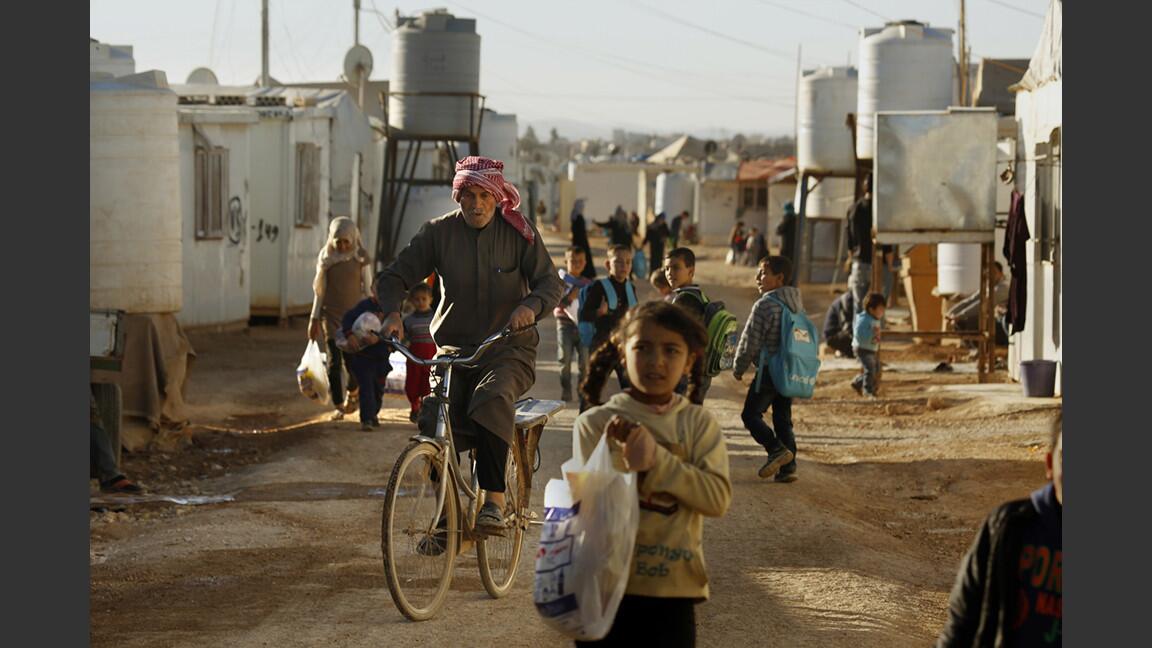
Ibrahim Hariri has lived with his extended family in the Zaatari refugee camp for more than three years. They are members of the prominent Hariri tribe from Syria’s southern Dara province, which borders Jordan and where most of Zaatari’s residents have their roots.
(Carolyn Cole / Los Angeles Times)Zaatari is home to more Syrian refugees than any other place outside Syria. With a population of 79,000, it is the equivalent of Jordan’s fourth largest city.
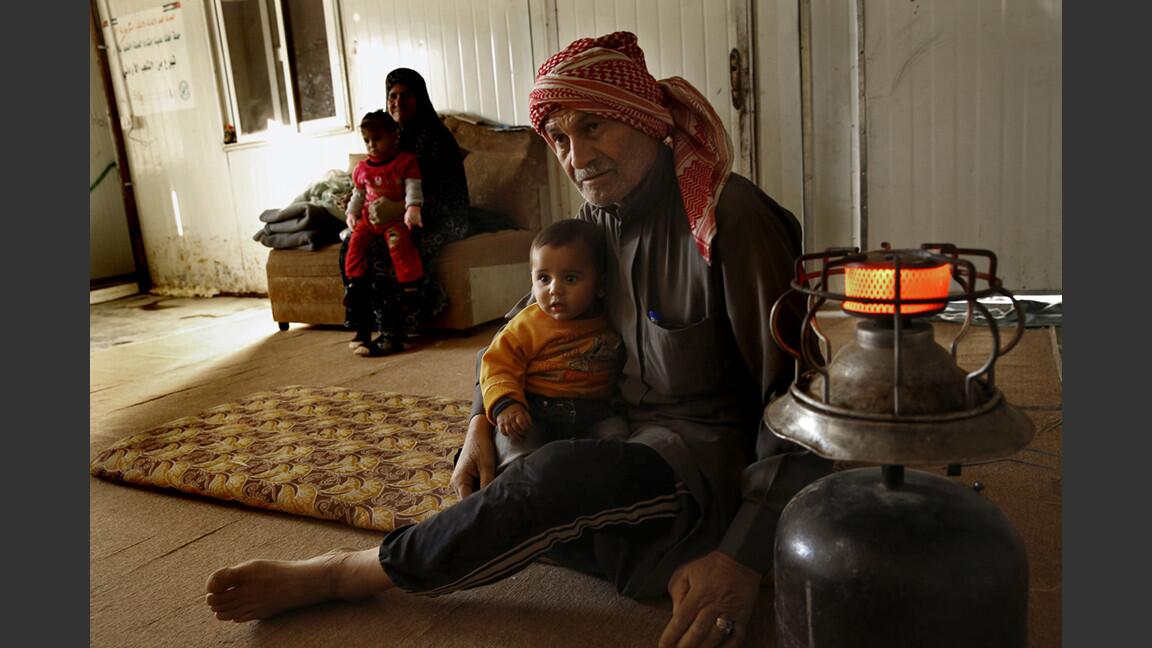
“I would go back in a minute if I could,” says Hariri, 62, a retired policeman who says he was arrested by Syrian authorities and held for a month after the start of the war.
(Carolyn Cole / Los Angeles Times)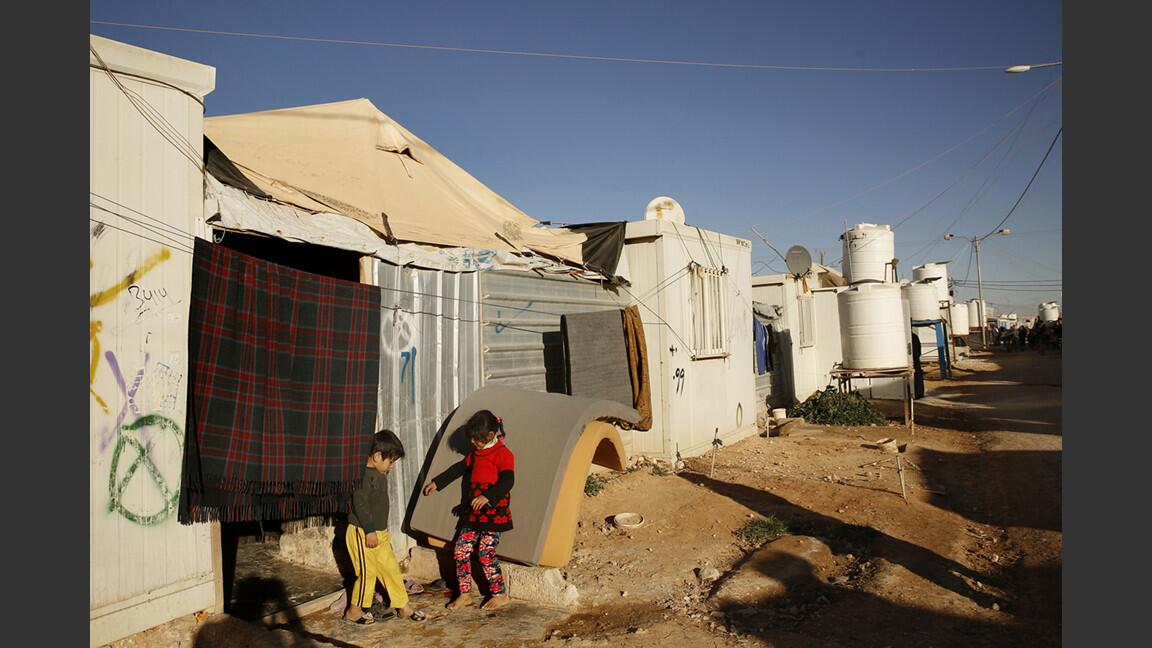
Just nine miles south of the Syrian border, Zaatari is home to two field hospitals, two supermarkets, nine schools, nine clinics, more than 80 mosques and more than 3,000 shops.
(Carolyn Cole / Los Angeles Times)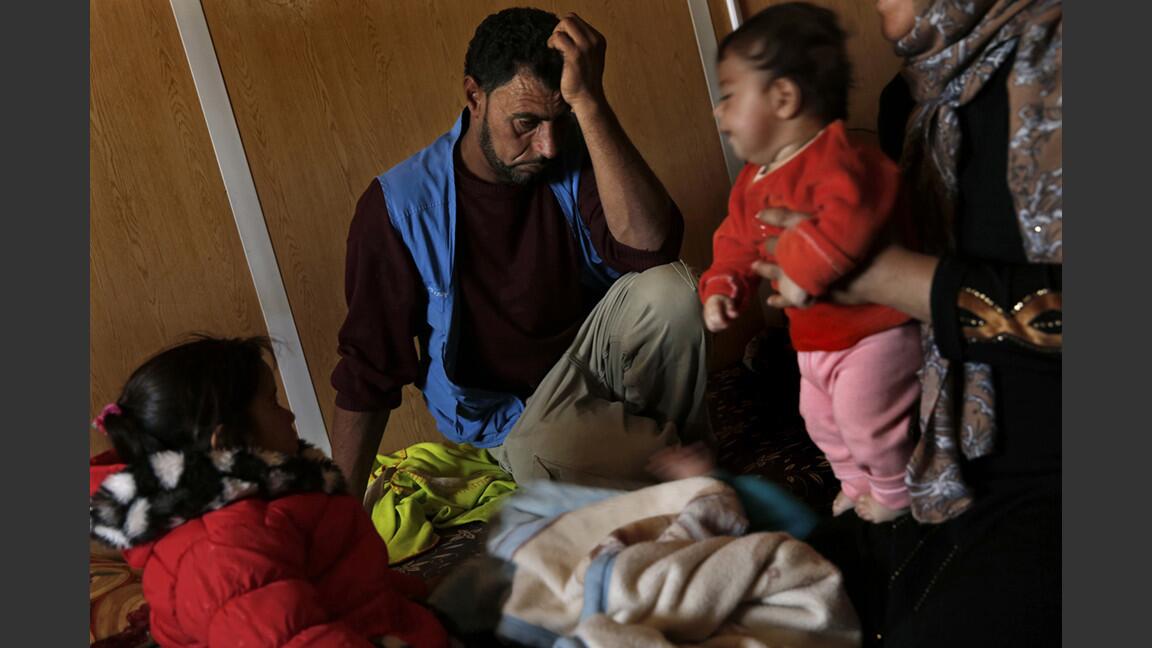
Syrian refugee Nour al Din Dakhl Allah and his family -- Ayaa, 18 months, left, Hiba, four months and his wife Nawal Qaddah -- have lived in the Zaatari refugee camp for three years. The family is from Tsil, Syria, which is in rebel-controlled territory.
(Carolyn Cole / Los Angeles Times)Advertisement
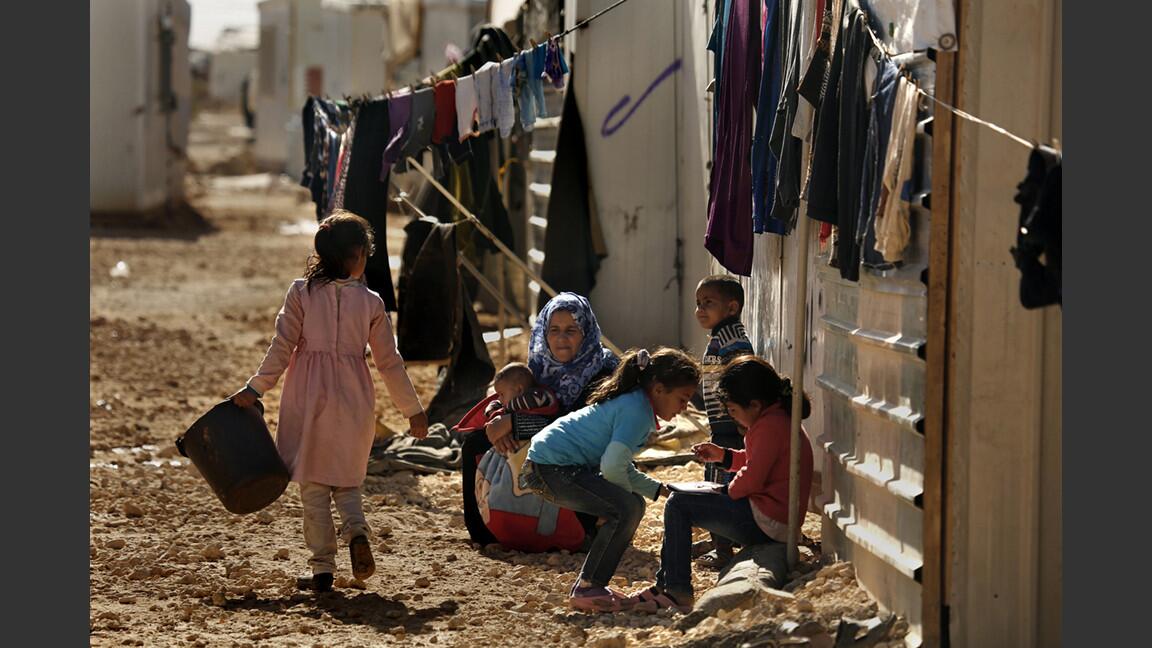
These days, hardly anyone in Zaatari sleeps in tents, but rather in pre-fabricated trailers bristling with satellite dishes and jury-rigged electrical wiring.
(Carolyn Cole / Los Angeles Times)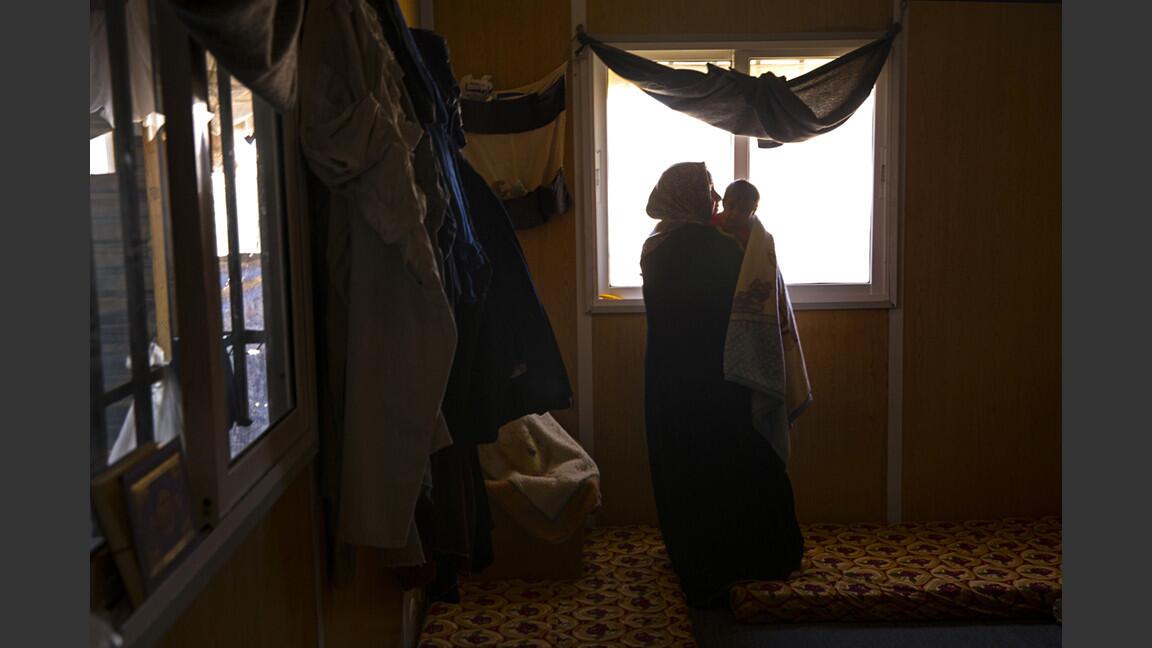
Nawal Qaddah with 4-month-old Hiba. The family has suffered many losses, including the death of a young cousin recently.
(Carolyn Cole / Los Angeles Times)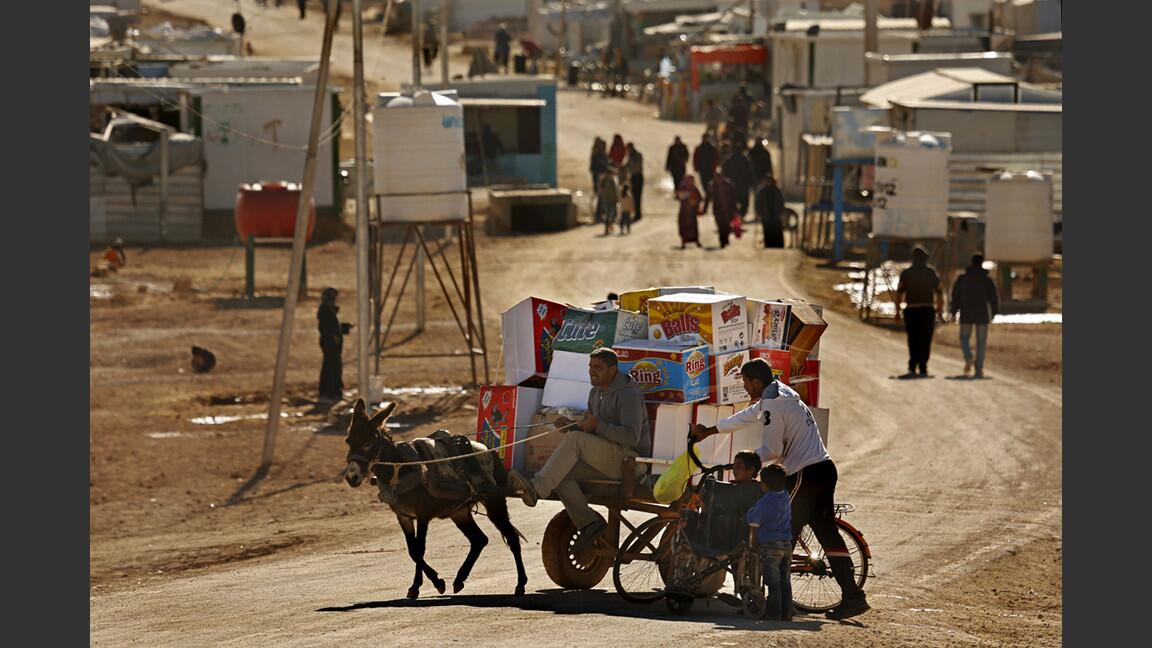
Compared to the hovels where many refugees live in Lebanon, Zaatari offers five-star accommodation. But there is no escaping the claustrophobia. Residents are fenced in from the outside world. Leaving Zaatari is only possible with permission from Jordanian authorities.
(Carolyn Cole / Los Angeles Times)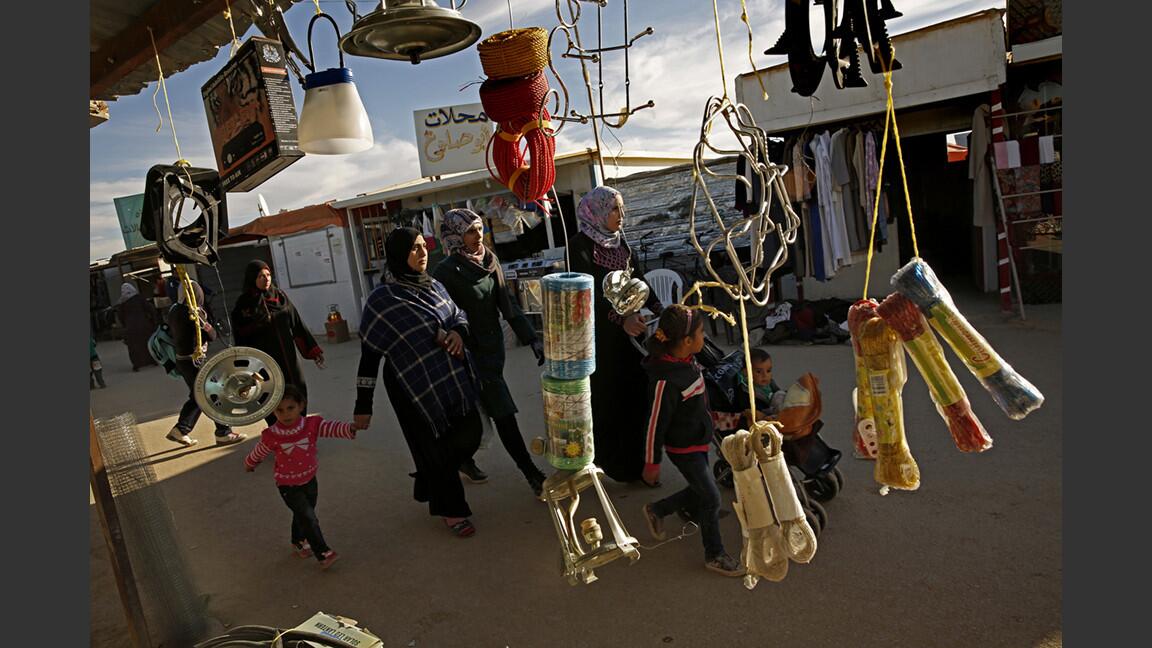
In Zaatari there are vegetable stands and cellphone kiosks, bicycle repair outlets and bakeries, restaurants, barber shops, beauty salons and wedding boutiques. Some shops feature caged songbirds outside, a common fixture in Syria.
(Carolyn Cole / Los Angeles Times)Advertisement
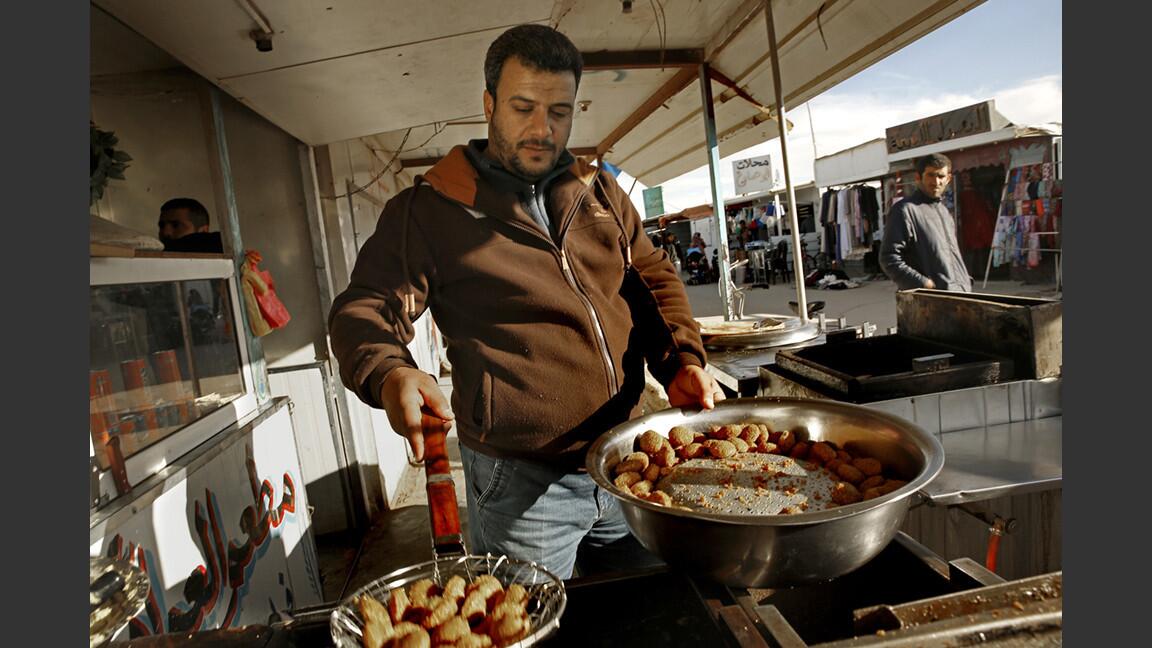
Saleh Jibraail runs a falafel stand in the Zaatari refugee camp. He ran a falafel shop in Damascus until it was destroyed in the fighting. “I realized there was a demand here, so I decided to do what I knew to do best: falafel,” he says.
(Carolyn Cole / Los Angeles Times)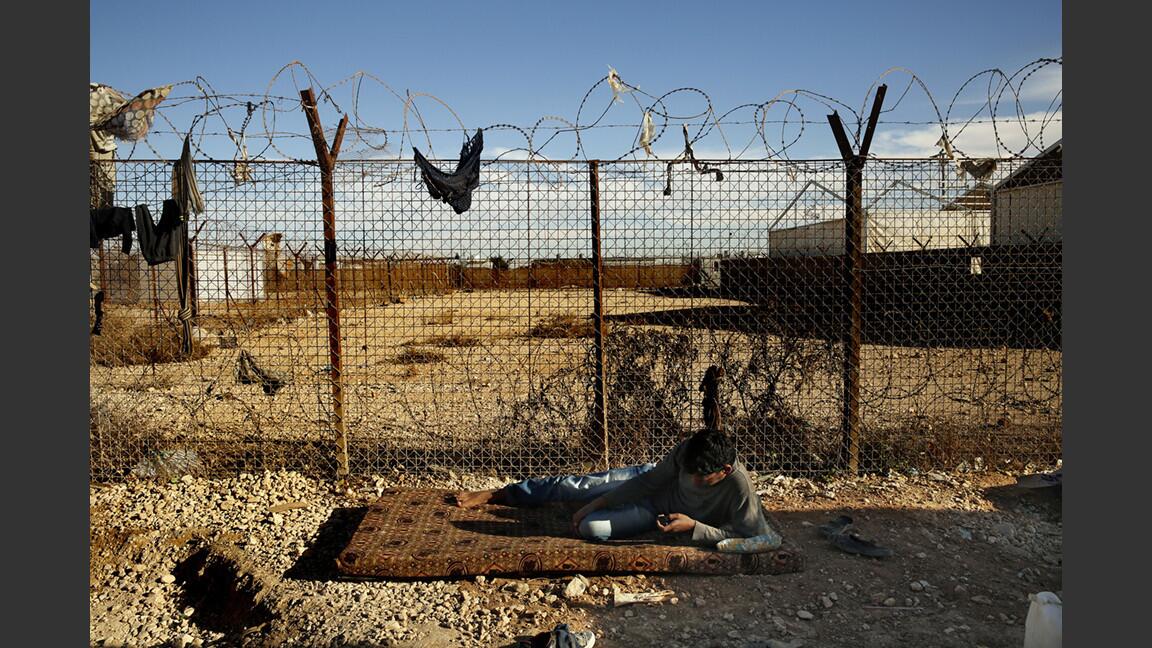
Syrian refugee Ahmed Fankhoor lives with his brother in Zaatari refugee camp where he has no job or prospects for his future. “I don’t know what to do. I can’t do anything here,” he says. “I have no money.”
(Carolyn Cole / Los Angeles Times)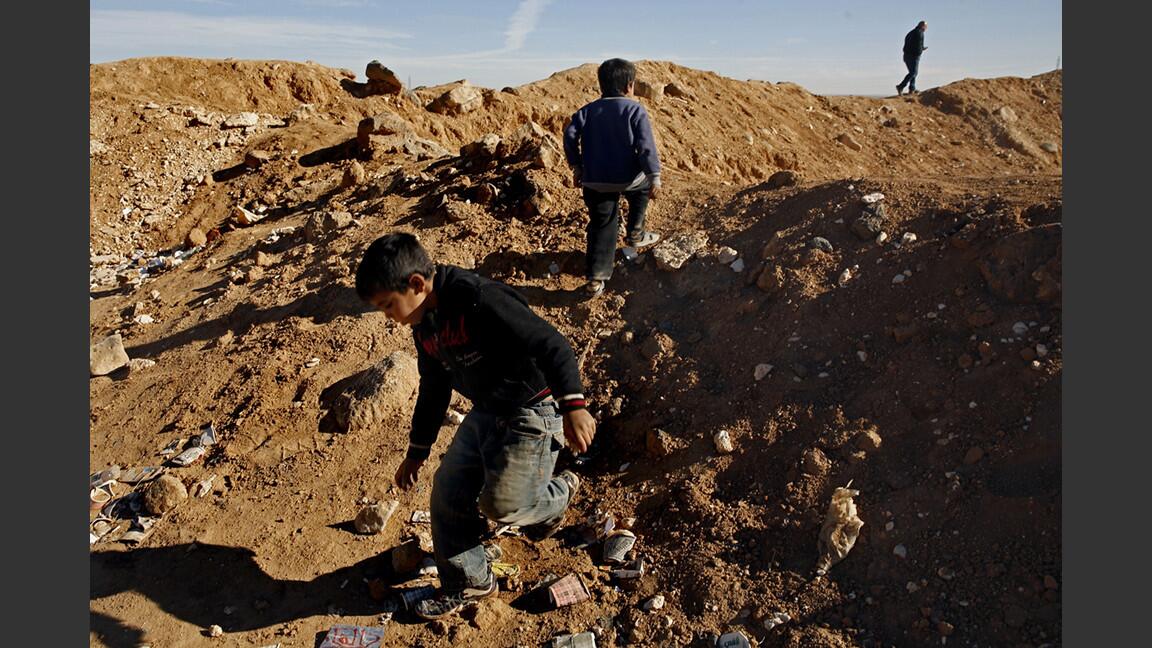
Syrian children look for plastic and other items of use at an area used for dumping garbage.
(Carolyn Cole / Los Angeles Times)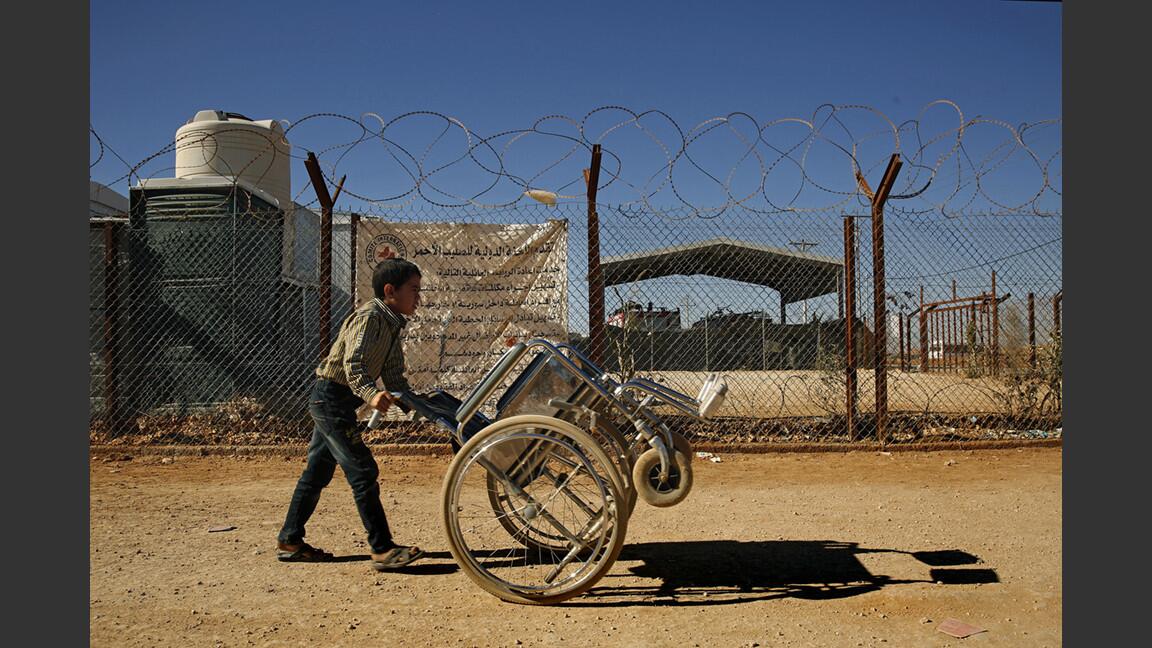
A Syrian refugee boy pushes a wheelchair by the Red Cross compound at Zaatari refugee camp.
(Carolyn Cole / Los Angeles Times)Advertisement
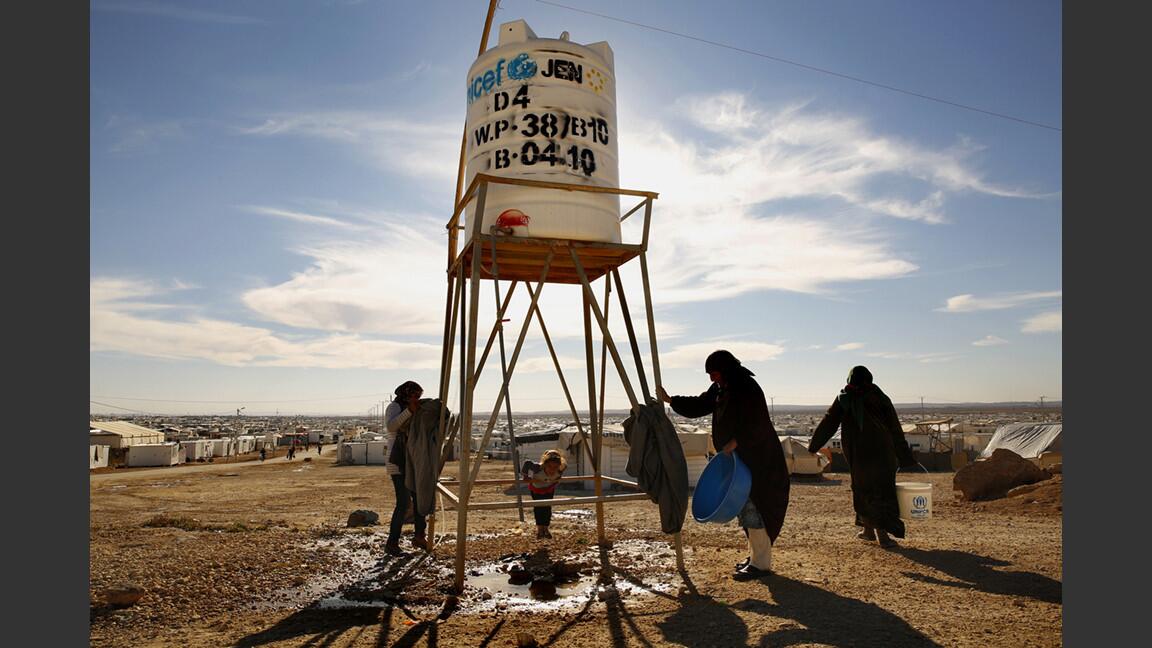
With no running water, residents collect water for cooking, cleaning and washing from water tanks around the camp.
(Carolyn Cole / Los Angeles Times)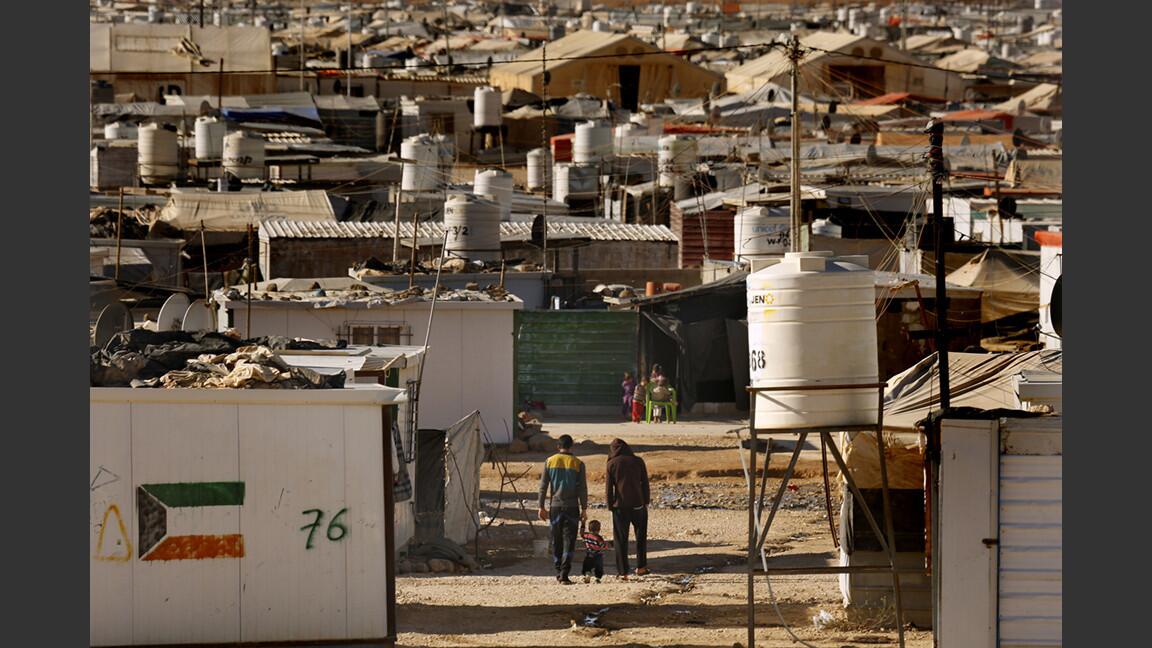
More than 79,000 refugees live in Zaatari refugee camp, where there is no running water.
(Carolyn Cole / Los Angeles Times)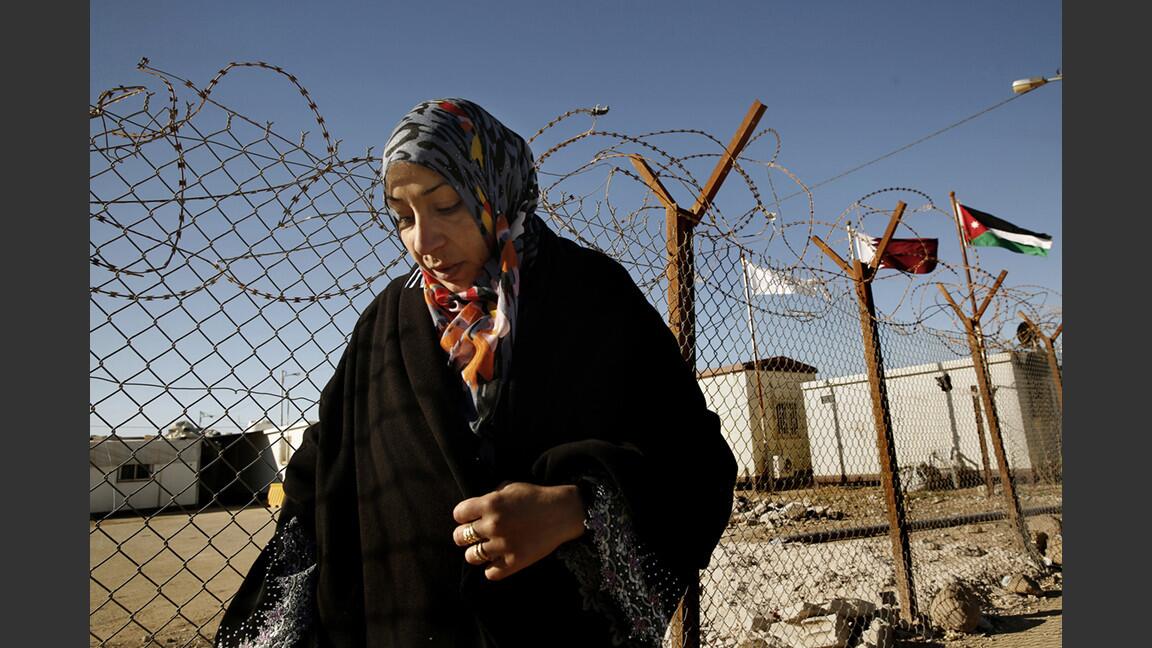
Syrian refugee Samah Qteish, a pregnant mother of two, stands at the perimeter of Zaatari refugee camp waiting for her husband. Anyone who wants to leave the camp must get approval.
(Carolyn Cole / Los Angeles Times)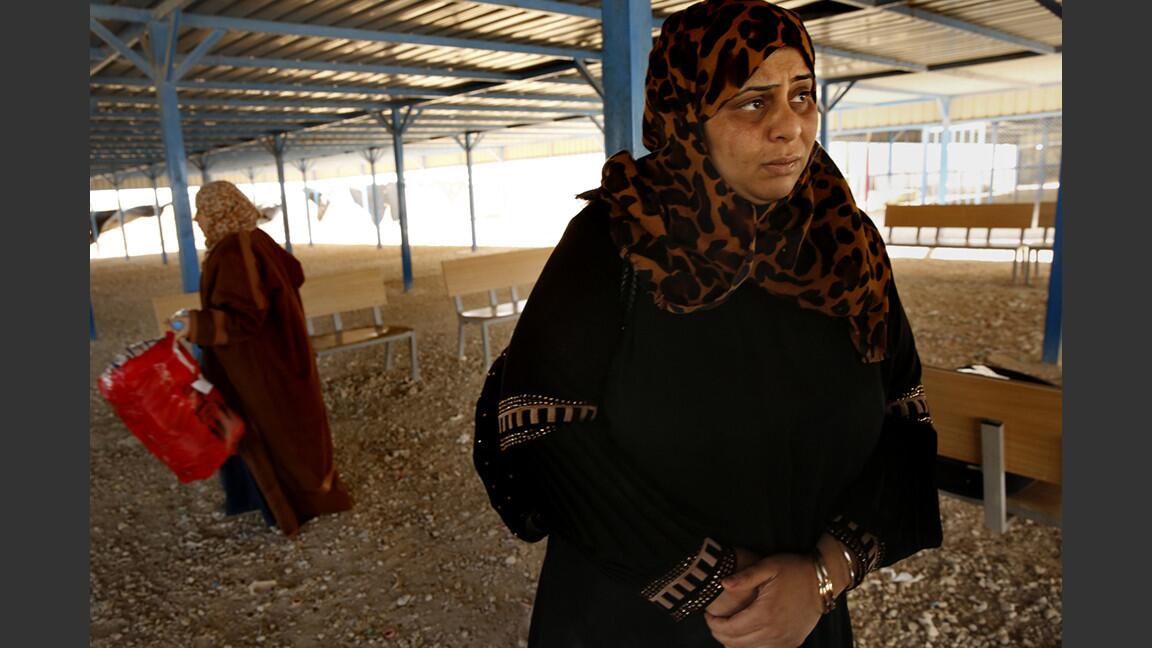
Fatima Kilani waits for the bus that will return her to Syria. She was taking too much luggage, which is a problem, as the drop off is in a dangerous area.
(Carolyn Cole / Los Angeles Times)Advertisement
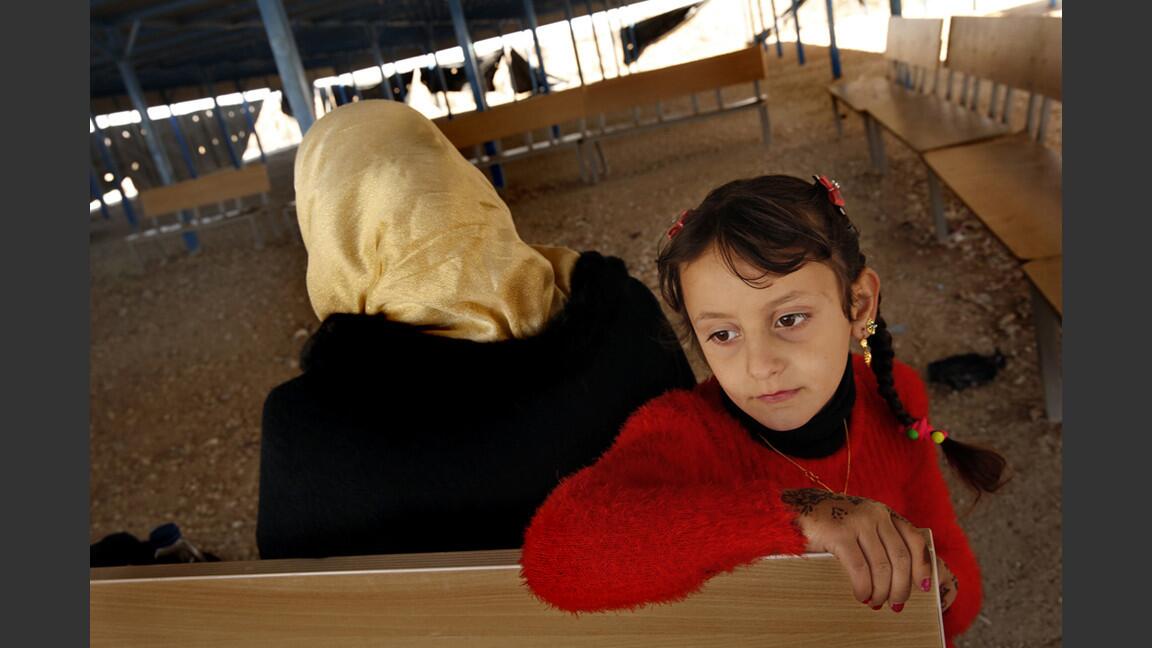
Syrian refugee Summar Obeid, left, waits at the departure center before getting on the bus to go back to Syria. Her daughter Sundus, 8, and her three other children haven’t seen their father in five years.
(Carolyn Cole / Los Angeles Times)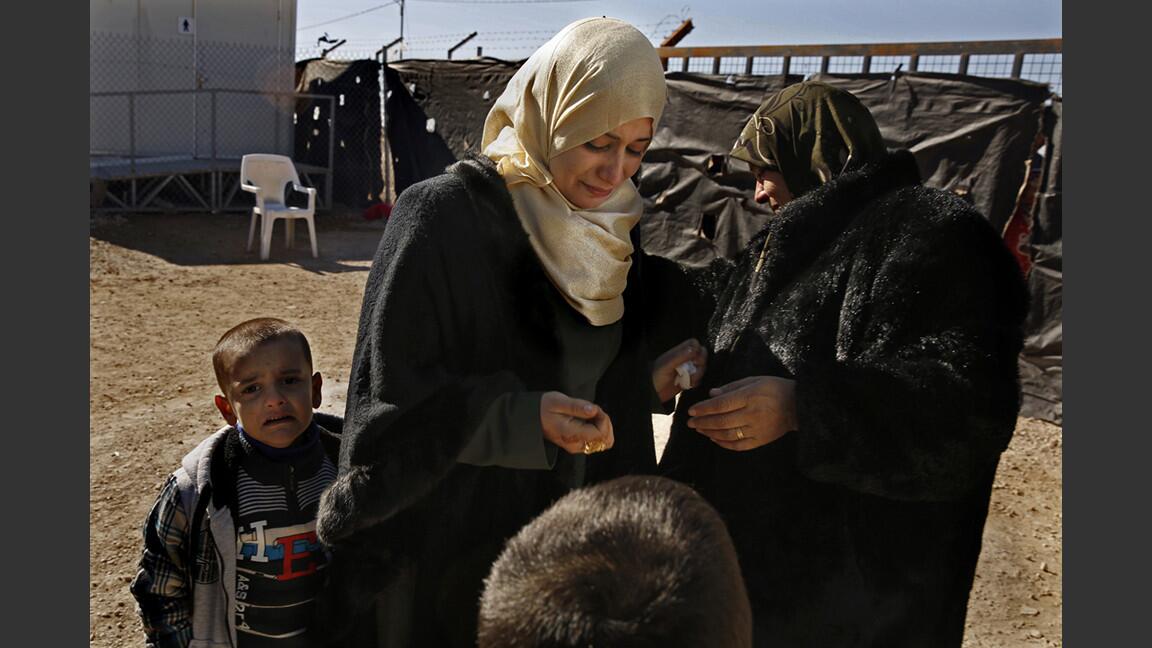
Summar Obeid, center, says goodbye to her aunt Um Tareq, right, at the departure center before getting on the bus to go back to Syria.
(Carolyn Cole / Los Angeles Times)


